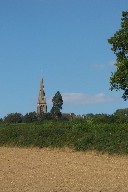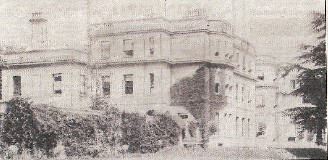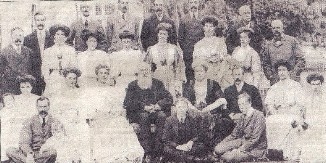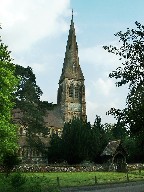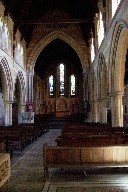  PRIVETT AND THE NICHOLSONS The Nicholsons were a famous family of distillers, and there are many jokes about the great church being funded by gin and sin! There is a memorial in the south aisle to one of the family who died drying to rescue a workman who was overcome by foul air at the distillery. No expense was spared in
the building of the new Holy Trinity Church. A
celebrated London architect, Sir Arthur
Blomfield, was engaged, and the church was
completed in two years between 1876 and 1878. It
was built of flint with Doulting Stone dressings,
while the interior is as stately as any great
Victorian town church. Subtle colour is
introduced with a variety of stone: white from
Bath, golden yellow from Ham Hill and a single
band of red from Corsehill. The crowning glory
was the spire, 180 feet high and the tallest in
Hampshire, containing eight bells. Under the benevolent
influence of the Basing Park Estate, the church
and the village flourished. The church boasted a
choir of 18 boys and 12 men, who were trained by
one of the Nicholson daughters, Gertrude, and the
children enjoyed the charabanc outings and
Christmas parties that were a feature of village
life in those days. But after a hundred years,
and with the departure of the Nicholsons, the
church was considered to be too big for the
parish, and many of the fittings were sold. It
was declared redundant and since 1980 has been in
the care of the Churches Conservation Trust, a
unique example of high Victorian splendour set
deep in the Hampshire countryside. Privett now
forms part of the parish of Froxfield with
Privett.
|
